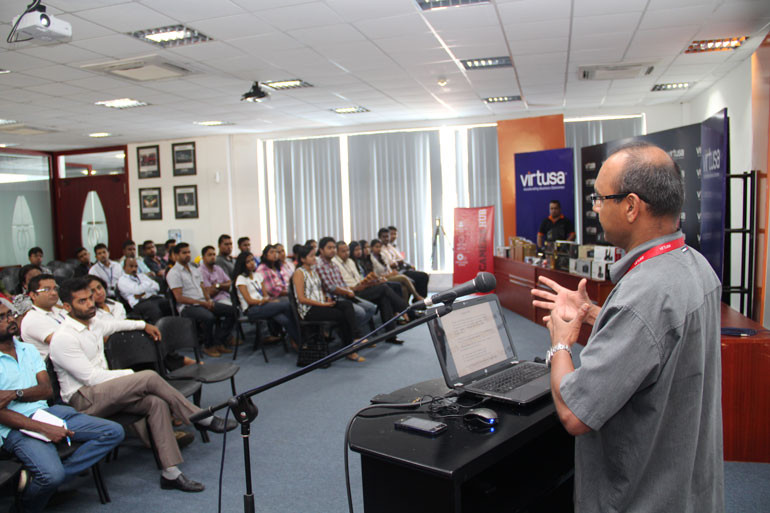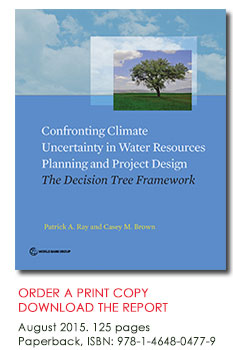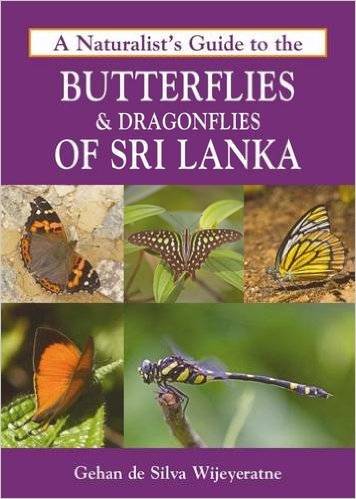
Compendium of Best Biodiversity Practices in the Plantations Sector- SLBBP
During the period when Sri Lanka was a British colony, large tracts of forest lands were converted to monocultures. These forests which once provided habitats to numerous species were converted to commercialized tea plantations. With population growth and shrinking forest cover, the biodiversity of the lands which were converted in to tea plantations have been degraded and threatened at a drastic rate.
It was bought to our attention that in response to this issue, several of the contemporary plantations management companies, have taken various steps, trying their best at conserving and enhancing the remaining forest patches within their plantations. Some of them have been recognized to possess commendable stories woven around the various biodiversity conservation initiatives they have undertaken and are being implemented. We believe that these stories need to be published and provided as much publicity as possible, in achieving one of the SL B&B Platform’s key objectives; to promote national cooperation and the exchange of ideas and information.
Being aware of the significant contribution that has been made by the Plantations sector in the management and conservation of biodiversity within their land holdings, the SL B&B Platform has begun putting together a Compendium of Best Biodiversity Practices from within the sector. Through this collection of stories, the SL B&B Platform hopes that there will be a lot of learning that will result, and possibly the sector could see the replication and adaptation of certain activities, that will work more towards the sustainable management and conservation of our valuable biodiversity heritage through the Plantations sector – a key stakeholder from within Sri Lanka’s private sector.
If you are a responsible plantations management company with a demonstrable story on one of your plantations with regard to good biodiversity conservation practice which you feel is worth being published, please contact our Projects and Communications Coordinator on 94.11.558.8843 or write to [email protected].

Beyond Zero Emissions Forum on Sept 17 – DAILY NEWS :Tuesday, September 15, 2015
Beyond Zero Emissions Forum on Sept 17
The Sri Lanka Business and Biodiversity (SL B&B) Platform of the Ceylon Chamber of Commerce (CCC), in collaboration with the Federation of Environmental Organizations, Eco-V and Journeys for Climate Justice, is organizing a joint forum.
It is titled ‘Beyond Zero Emissions: A Practical Approach to Combating Climate Change in Sri Lanka’on of September 17, 2015 from 5pm onwards to be held at the Ground Floor West Wing of the CCC in Colombo 02.
Dr. Stephen Bygrave, CEO of Beyond Zero Emissions, the Australian think tank, will address the audience with a keynote, which will be followed by a panel discussion to be moderated by Dr. Ananda Mallawatantri, Country Representative of IUCN Sri Lanka. The invited panelists are Dr. Sunimal Jayathunga, Director of the Climate Change Secretariat, AvanthiJayathilake, CEO of EML Consultants (Pvt.) Ltd., ChanakaWickramasuriya, Managing Partner of Ironwood Capital Partners, Jude Kasturiarachchi, Director, Jetwing Hotels Ltd. and SrilalMiththapala, Consultant Business Development for LTL Holdings (Pvt.) Ltd.
The objective of this event being put together primarily for a private sector audience,a key stakeholder in the global movement towards zero carbon emissions and beyond – is to identify and share best practice solutions that are currently available and are being practically implemented in different parts of the world. This event will be of utmost benefit to those private sector entities who are striving to reduce their emissions and contribute towards the national effort of combating climate change through various industry sectors such as energy, transportation, construction, agriculture and forestry.
More information on the event and registration can be obtained by writing to [email protected] or [email protected].

”Sri Lanka is one of the best locations in the world, if not the best, for wildlife tourism, asserts naturalist Gehan de Silva Wijeyaratne” — This scenario is Wijeyaratne’s dream come true. A crusader for the twin causes of wildlife promotion and conservation, Gehan contends – and he makes a pretty convincing case for it.

Sri Lanka’s Bogawantalawa Tea gets into green and organic tea production-Sep 11, 2015 ECONOMYNEXT
Sri Lanka’s Bogawantalawa Tea Estates says it is diversifying into production of green tea and organic tea to capitalise on changing consumer tastes.
D.J Ambani, the firm’s chairman, said the company has been able to establish its own green tea production facility at Norwood Estate in the central hills under its strategy to diversify the types of tea being produced.“The company has also obtained organic certification for its Rockwood estate enabling the Norwood production centers to produce both organic green and black teas to meet increased market demand for such premium Ceylon tea products.”
The company has expanded its organic tea cultivation area to cover Osborne estate as well.
Bogawantalawa Tea Estates has “plans to convert more tea lands for organic production at other tea factories situated in Bogawantalawa,” Ambani told shareholders in the firm’s annual report.
The Bogawantalawa Valley is well known for the flavour of its black tea.
The accounts showed the company has borrowed 30 million rupees to set up the green tea factory at Norwood estate.
(Colombo/September 12 2015)

What water planners need to know about decision making under climate change
Today, with the earth warming faster than previously thought, large changes in temperature and precipitation have brought about even more uncertainty concerning the future of our water resources. The primary challenge of achieving water security is our ability to make decisions in the present that sufficiently account for the needs of the future. This becomes particularly important in water projects that involve investments in long-lived infrastructure, which must deliver benefits for many generations to come. 
Resilient infrastructure will enable countries to respond to floods and droughts, sea level rise, and unpredictable river runoff, and to bring clean and safe water to those currently without access. But how do we ensure that our investments are resilient to climate risks? How do we make climate-smart policy choices against a backdrop of uncertainty?
The Decision Tree Framework described inConfronting Climate Uncertainty in Water Resources Planning and Project Design provides resource-limited project planners and program managers with a cost-effective and effort-efficient, scientifically defensible, repeatable, and clear method for demonstrating the robustness of a project to climate change.
The framework adopts a “bottom-up” approach to risk assessment that aims at a thorough understanding of a project’s vulnerabilities to climate change in the context of other nonclimate uncertainties (for example, economic, environmental, demographic, or political). It helps to identify projects that perform well across a wide range of potential future climate conditions, as opposed to seeking solutions that are optimal in expected conditions but fragile to conditions deviating from the expected.
SLBBP Engages in Enhancing the Aesthetic Environment Around Ceylon Tea Trails Bungalows, Dik-Oya
The Castlereigh reservoir is considered a high-value resource by Ceylon Tea Trails, the World’s First Bungalow Resort, promoting responsible nature-based and adventure tourism in the central highlands of Sri Lanka. The reservoir was created as Sri Lanka’s first mini-hydro power generation project, by damming the KehelgamuOya – a major tributary of the Kelani River. Located in the Central Province, the reservoir also gets fed by the DikOya, a minor tributary.
In an attempt to increase the potential of the reservoir for water sports and in general consideration of uplifting of the environment surrounding the Ceylon Tea Trails Bungalows located overlooking the reservoir, a field visit to the bungalows, reservoir and its feeding canals and streams was carried out recently based on the agreement signed between Dilmah Conservation and the Sri Lanka Business and Biodiversity Platform. Secretariat staff and experts visited the Dick Oya area of the Castlereigh reservoir and made observations on the surroundings of the Castlereigh reservoir and its feeding canals.Discussions were had with officials of Ceylon Tea Trails the Central Environmental Authority, the Ceylon Electricity Board, Department of Aquaculture,NuwaraEliya the Ambagamuwa Divisional Secretariat and the local Fishermen’s Cooperative Society, in order to obtain their inputs on the issue at hand.
Impacting negatively on the aesthetic beauty of the area is accumulated solid waste in the Castlereigh reservoir due to unregulated and haphazard waste disposal and dumping in the area.Under the guidance of Solid Waste Management expert, Dr Sumith Pilapitiya, the Platform will facilitate a sustainable solid waste management programme with the participation of all stakeholders.
Systematic assessments, water quality analysis and awareness creation will constitute the programme, the first phase of which will last for one year.
How climate change and natural capital are changing banking
https://www.greenbiz.com/article/how-climate-change-and-natural-capital-are-changing-banking
The climate in financial institutions is changing. With a keen eye on market forces and a core business focused on supporting economic growth, leaders in financial institutions are launching low-carbon initiatives and investing in green infrastructure.
How climate change and natural capital are changing banking _ GreenBiz
“Democratic conservation of biodiversity is must”
Radheshyam Jadhav, TNN | Aug 17, 2015, 05.38 PM IST
Botanical Survey of India (BSI) and Zoological Survey of India (ZSI) under the ministry of environment carry out surveys and documentation of biological resources including threatened and important species of India.
Democratic conservation of biodiversity is must – The Times of India
Holcim Lanka engages local stakeholders towards promoting sustainable environmental practices
Demonstrating leadership and commitment towards improving sustainable environmental practices, Holcim (Lanka) Ltd recently organized a high-level interactive session on global environment management trends and Sri Lankan learning.

A Naturalist’s Guide to the Butterflies & Drag onflies of Sri Lanka By Gehan de Silva Wijeyeratne
Gehan de Silva Wijeyeratne’s “A Naturalist’s Guide to the Butterflies &Dragon flies of Sri Lanka” is a useful guide to whom it may concern with Biological Diversity in Sri Lanka. Increasingly the segmentation between birders, butterfly watchers, dragonfly watchers and photographers is reducing as interests overlap and there is a demand for books that cover the three popular groups of birds, butterflies and dragonflies. Having written and photographed the guide to the birds of Sri Lanka in the series, Wijeyeratne has produced a single, compact and portable photographic guide to the butterflies and dragonflies of the country. The emphasis in the 280 species featured is on the commoner species, covering around 90 percent of the species that a visitor is likely to see. It is also an excellent book for residents to learn about the commoner butterflies and dragonflies before progressing to more advanced technical books.
The guide is focused on field use to help beginners and experts identify species and provides information on their distribution and habitats. As identification of butterflies and dragonflies require a different approach, the two sections are done as two mini photographic field guides with common introductory sections to wildlife watching in Sri Lanka. The book includes information on the key wildlife sites, general introductions to the biology of dragonflies and butterflies, up-to-date checklists with local status and useful references for people who wish to progress further with their study of these charismatic and photogenic animals.












